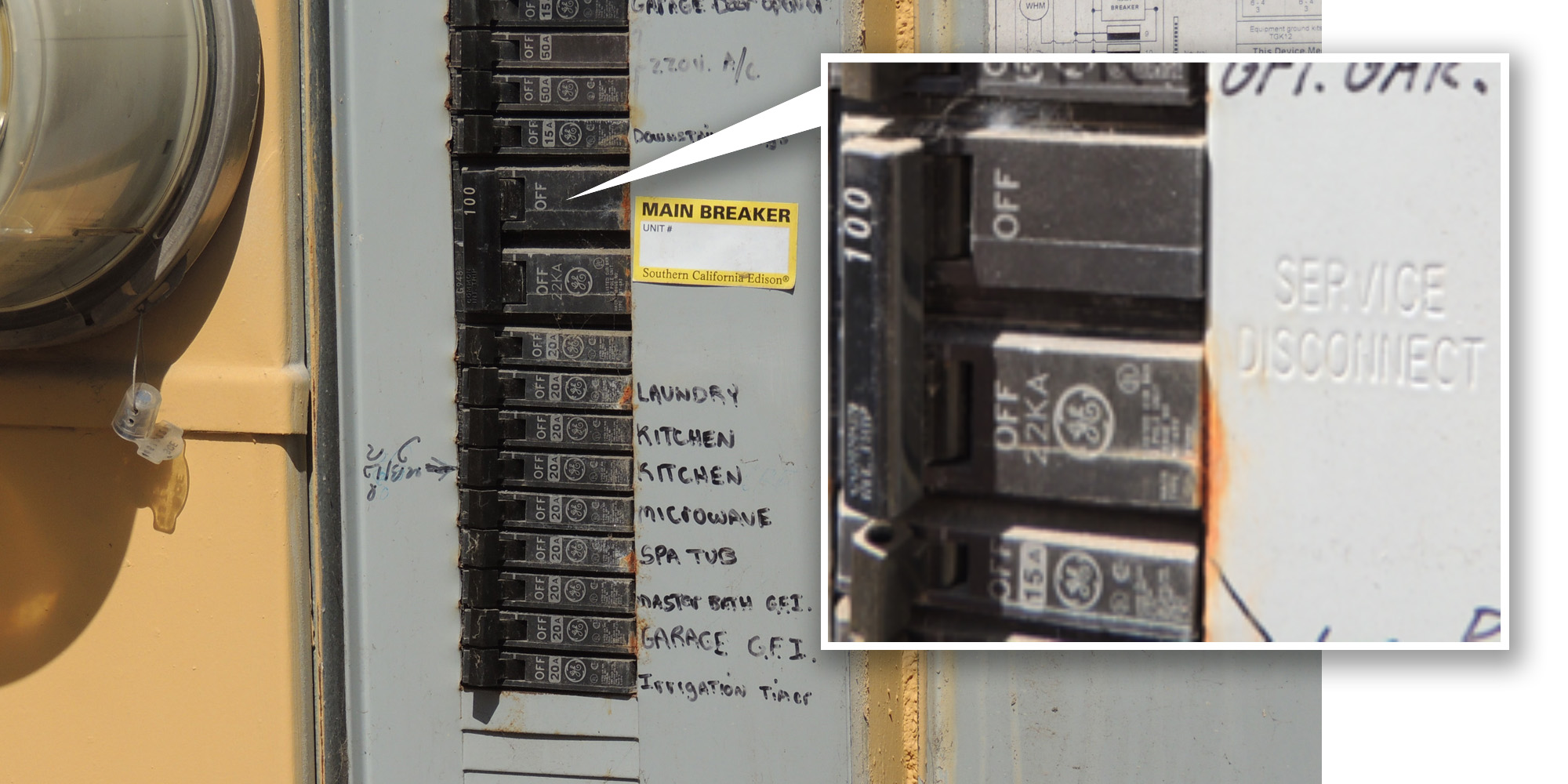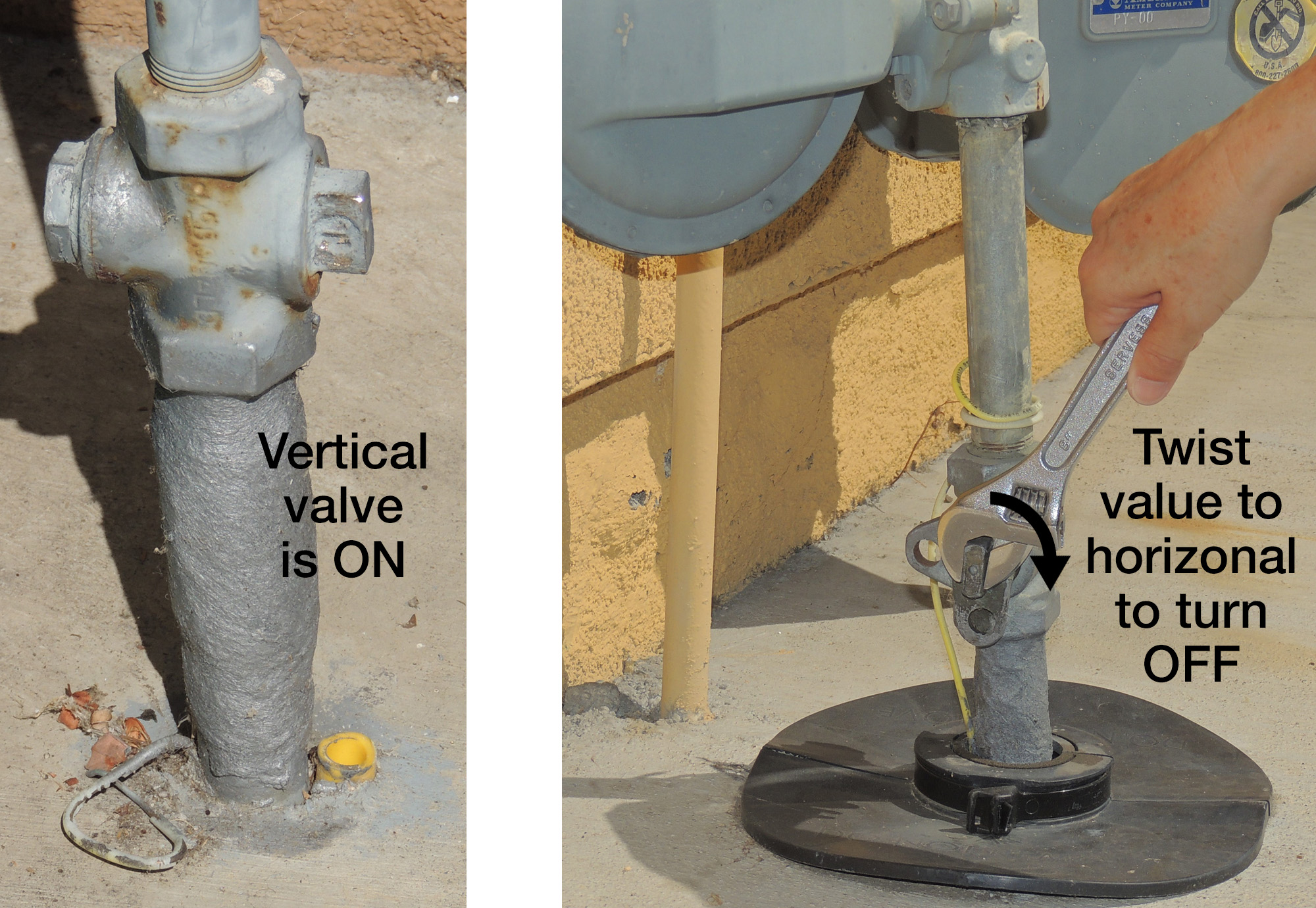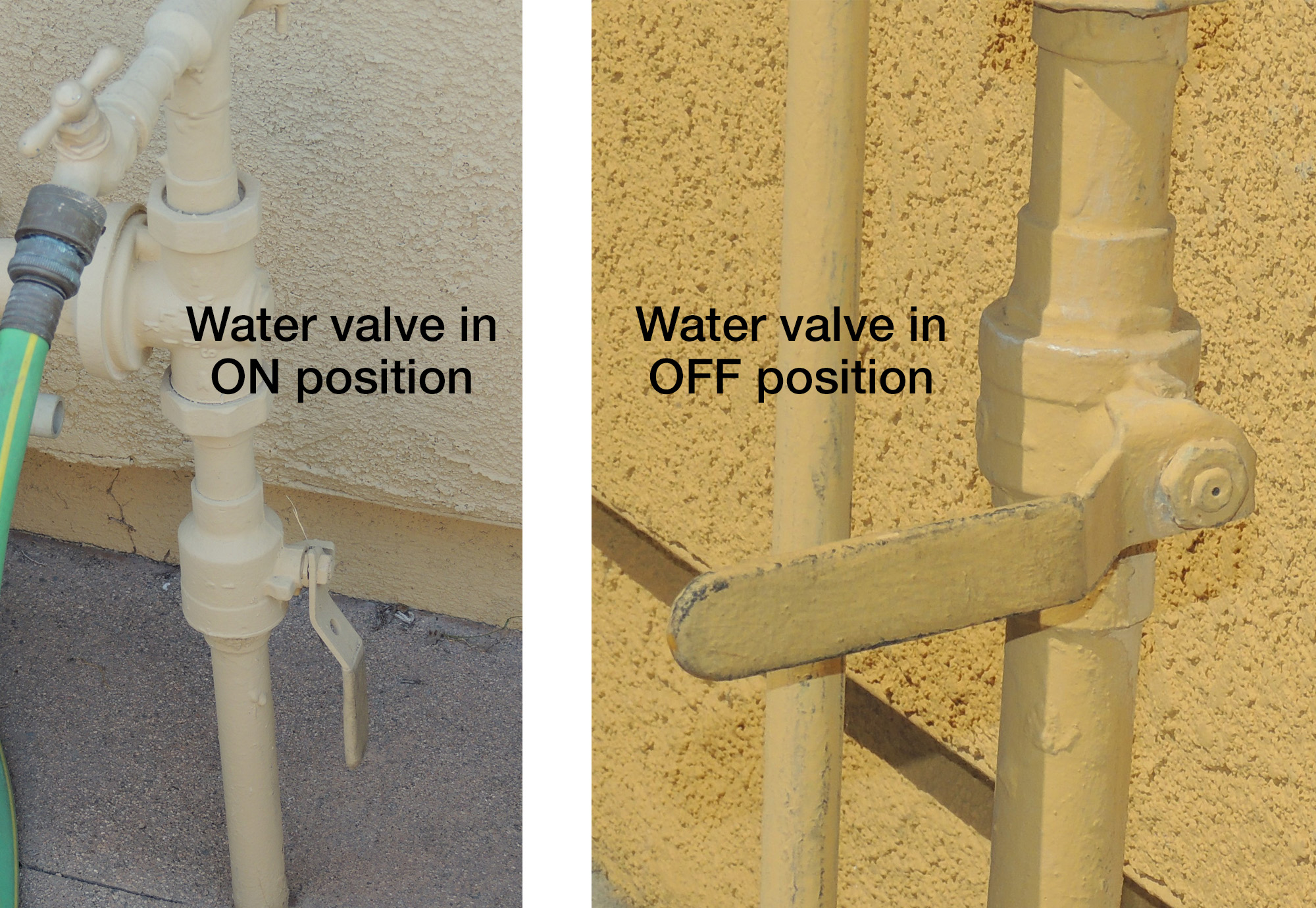In the event of a major earthquake, wild fire or any other emergency which threatens your home, do you know the steps to take to minimize the hazards of leaking natural gas, damage from broken water lines, or short circuits in your electrical system? In this brief article we will show you how to shut down these 3 systems.
TIP: In case the emergency occurs during the night, make sure you have a flashlight handy so you can complete these steps outside in the dark.
First let’s discuss what needs to be done quickly in the case of a major earthquake. If you read about the damage caused by earthquakes, you will quickly learn that fire is a major problem. To minimize the risk of fire, it is recommended you turn off your utilities in this order:
- Electrical system – this will minimize the risk of a spark setting off any leaking natural gas should someone turn a light switch on or off in the presence of natural gas in your house.
- Natural gas
- Water
Electrical System

The switch that turns off the electrical power to the whole house in all Evergreen houses is located on the outside of the garage in the back patio. It is a double switch located near the vertical center of the electrical panel. To shut off electrical power to your whole house, push the dual switches, with the number 100 on each of the handles, hard to the right toward OFF. NOTE: The words “SERVICE DISCONNECT”’ are imprinted in the metal beside the correct switch.
When the emergency is over and if you do not smell any natural gas in your house, the way to turn the power back on in the whole house is to push those same switches all the way to the left while standing to one side, i.e., not directly in front of the switches. This is done in case there is a short in the panel which arcs when the switches are moved into the ON position. While an electrical arc is a very rare occurrence, this precaution is advised.

Natural Gas

The following is a paragraph from the gas company: As you face the meter, you’ll see a pipe running from the ground to the meter. There is a shut-off valve running parallel with the pipe, usually located about 6 to 8 inches above the ground. Take a 12-inch (or larger) adjustable wrench, and turn the valve 1/4 turn in either direction, until the valve is crosswise to the pipe.
TIP: Keep a 12-inch (or larger) adjustable wrench with your emergency supplies.
Once you have shut off the natural gas at the meter, do not try to turn it back on yourself after the emergency has passed. If the natural gas service shutoff valve is closed, SoCalGas or another qualified professional should perform a safety inspection before the natural gas service is restored and appliance pilots are re-lighted.

Water

The water supply for the whole house is also located in the back patio. The water supply comes from the pipe with the water spigot (i.e. where you attach your garden hose). House plans 2, 3, and 4 have the water line next to the garage in the back patio, while plan 1 homes have the water line near the back patio corner of the house. Along the water pipe, there is a valve with a handle attached. The water is ON when the handle is parallel with the pipe. To shut OFF the water, turn the handle clockwise by pulling the handle up towards you so the handle is parallel with the ground, i.e., 90 degrees or a ¼ turn.
NOTE: There have been instances when the water shutoff valve has been frozen open, i.e., it could not be turned and a plumber had to be brought in to fix or replace the valve. Therefore, it would be prudent to try to turn your water shutoff valve, and if you cannot, have it repaired or replaced.

As a secondary way to turn off your water, there is a shut-off valve outside the back patio fence, between the curb and the fence. It is in the water meter box in the ground. You must remove the concrete cover and reach down to turn the valve counterclockwise for a ¼ turn to the OFF position.


Additional Emergency Supply Recommendations
Here are some additional recommendations for your home:
Leaking water heater
- Turn off gas (see #1 on diagram)
- Turn of incoming water (See #2 )
- Attach a garden hose to drain valve and run outside or to a drain (See #3) and open valve.
- See #4- This is an emergency over pressure valve that works automatically. Do not attempt to open this valve.

Carbon Monoxide Detector
California’s Carbon Monoxide Poisoning Prevention Act of 2010 dictated that, starting on July 1, 2011, all residential property, from one to four units, must be equipped with approved carbon monoxide detector equipment. Please refer to reliable Internet sources to find recommendations on type, quantity, and placement of these detectors in your home.
Fire Extinguishers
It is recommended that you keep an ABC rated fire extinguisher in your kitchen, and also one on your second floor. Please refer to reliable Internet sources to recommend type, quantity, expiration date, and placement of these extinguishers in your home. (Note: Please don’t forget to keep one in your auto.)
Fire Escape Ladder
Homeowners with a second story may want to store a fire escape ladder under your bed or in your closet in case you are trapped upstairs during a home fire.
An alternative to a fire escape ladder is a smoke hood. They come equipped with special filters which remove poisonous gases (CO, H2S, etc.), and gives you adequate time to exit your house. Here is a photo and an URL for one company that manufactures them:
(Note 1: we are not recommending this specific company but are only using it as an example of the technology. Note 2: these hoods can also be carried in your carry-on luggage and used on a airplane in case of fire. Airline crews are equipped with similar units already.)


iEvac® Smoke Hood/Fire Hood by Elmridge Protection
www.elmridgeprotection.com
